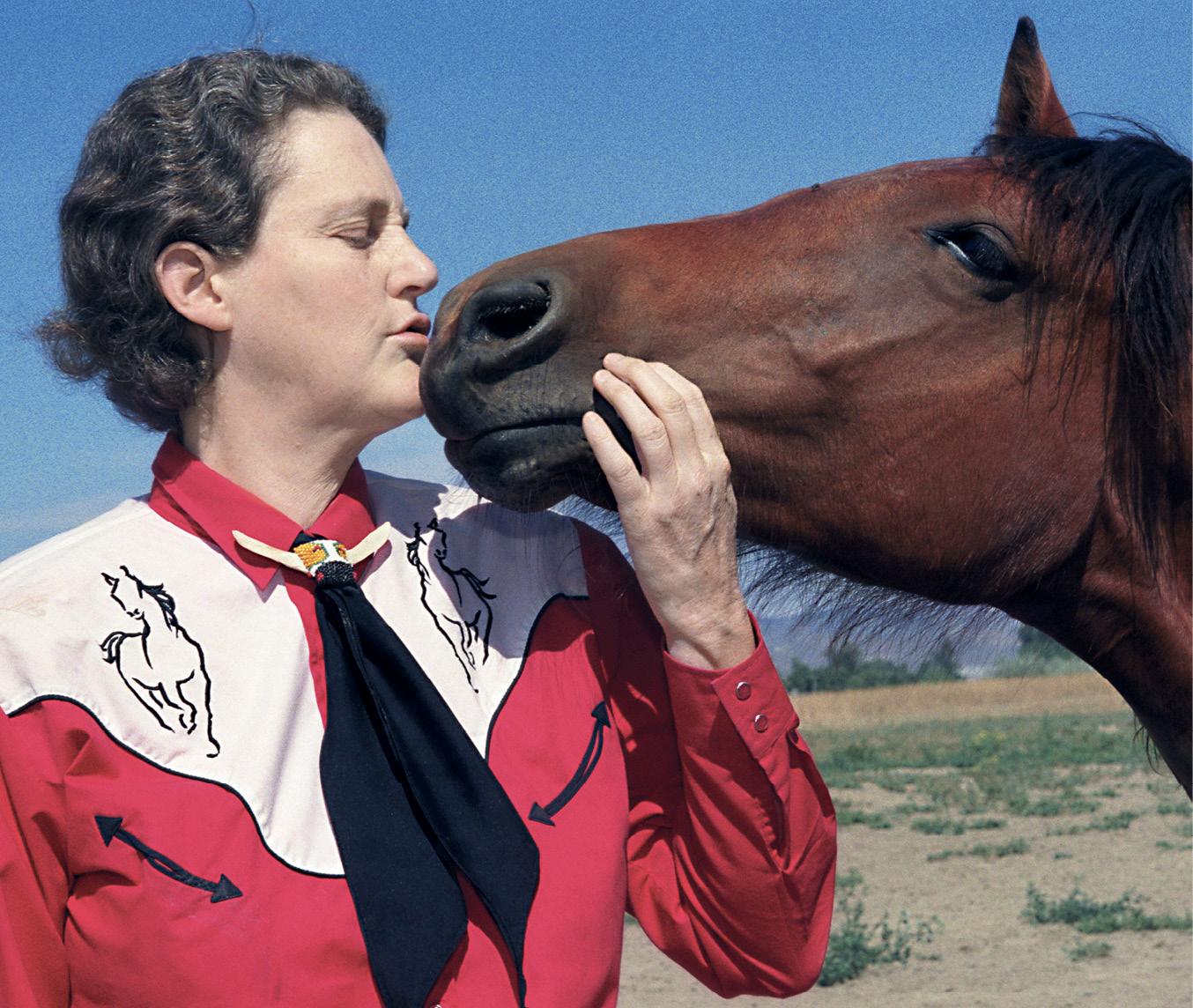Temple Grandin

Chelsea
As a toddler, Mary Temple, as she was known then, didn’t speak. The doctors her parents brought her to in their hometown of Boston didn’t think anything could be done to help her. Her parents were advised to institutionalize her, an all-too-common practice even in the 1950s. But her mother, Eustacia, refused to accept that verdict. First she found a doctor who suggested speech therapy, which worked. Then she sent Temple to school, even though it was sometimes challenging for her to be in a classroom because she didn’t learn or communicate the way other kids did. When Temple was fifteen years old, she went to her aunt’s ranch, where she had a life-changing realization: The animals she saw there felt the same intense fear and sensitivity to sound and touch that she did.
Temple Grandin has spent her life working to improve the living conditions of livestock in a male-dominated industry. Despite the challenges she faced, Temple never doubted her mission, her training, or her unique qualifications. After studying human psychology in college, she completed a master’s degree and a PhD in animal science. She went on to design facilities around the world that lead to fewer animal injuries and less stress, and she has helped come up with more effective stunning methods so animals are killed more humanely, with less pain. Over time, she won over an industry that was skeptical of her approach and rife with sexism. Temple’s scoring system to assess how the livestock industry treats the animals that ultimately wind up as steaks, burgers, chops, and bacon is now the standard assessment tool for most of the livestock industry in the United States and Europe.
“When I started my career in the early ’70s, no women worked in the cattle yards. The guys didn’t like me being there, but I didn’t pick up on the subtle social cues; what I cared about was working with the animals and studying the cattle chutes. Being autistic was an advantage, because all the hostility didn’t affect me as much.”
—TEMPLE GRANDIN
I first learned about Temple from my Grandma Dorothy. It was over the holidays one year when I was in high school, and she had just read Temple’s book, Thinking in Pictures. My grandmother raved about Temple’s brilliance and how well she explained what it was like to think in pictures. I promptly borrowed the book and began to follow her work through interviews and other writing. Years later, my grandma and I watched a movie about her life. The more I learned, the more interested I became in Temple and her work. She links her ability to think in pictures—including her ability to innovate humane livestock handling designs in her mind before she ever commits them to paper—to her autism.
Temple is not a hands-off researcher. She goes into the physical spaces where animals are kept, as well as the corrals and chutes they’re forced through; she has even stood in stun boxes where animals are killed. Her physical experience of an animal’s journey led to two of her signature designs. Her curved loading chute prevents cattle from seeing where they’re headed, so they are less likely to become stressed or injure themselves trying to escape. Her center-track restrainer holds cattle steady during slaughter so that they’re stunned without accidental injury. There is no need for an animal to suffer for anyone’s breakfast, lunch, or dinner. Even McDonald’s agrees: They hired Temple to improve animal welfare in the slaughterhouses that supply their hamburger meat, and she trained the first wave of auditors to ensure that the new standards were being respected.
Though animal welfare is what she’s best known for today, it’s just one area where Temple is a trailblazer. When she was in college, science professor William Carlock supported her work building the first major design for a hug box, a deep-pressure machine to help calm hypersensitive people who may not be receptive to being hugged by another person. Temple used her version for decades until she became comfortable hugging people. Since then, Temple’s hug box and other related designs have helped countless others on the autism spectrum grow comfortable hugging and being hugged.
Temple’s impact on raising awareness about autism and the value of supporting people who think, learn, and communicate in different ways is hard to measure. She has never hidden how her autism has shaped her life, or let the discomfort of others limit her. Temple has described the way her mind works as “literally movies in your head.” Research suggests that animals also think in pictures, helping to explain Temple’s empathy and extraordinary gift for understanding how to lessen their fear and pain; her realization as a teenager that animals experience the world the way she does was spot-on. The woman some doctors gave up on when she was two years old has helped transform how we think about animals and ourselves.